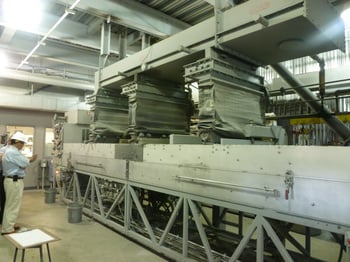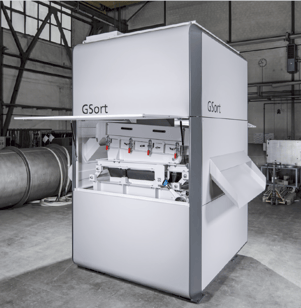Separators
Triboelectrostatic Separator - STET
The triboelectrostatic separator is a processing equipment that exploits the physical property of adopting an electrical charge, through the transfer of electrons, which naturally occurs when particles of a mineral or organic material collide or rub against each other. This phenomenon occurs without the need for induction from an external source.
The machine features a separation chamber positioned between two electrodes operating at high voltage. Particles enter the chamber already charged, either positively or negatively, depending on their nature, and are attracted to the oppositely charged electrode. An open-mesh belt, rotating at a high speed between the two electrodes, pulls positively charged particles towards one end of the separator and negatively charged particles towards the opposite end.

Densimetric Tables (GSort) - Mogensen
GSort is a dry densimetric separation equipment that operates based on an inclined and vibrating deck, achieving separation when the materials to be processed have at least a 20% of difference in their densities, and a particle size ranging between 0.5 mm and 80 mm. The new GSort can replace or complement wet gravity separators. This not only improves water management but also reduces energy costs.
Key advantages:
- Flexibility to adjust the machine's working parameters individually, quickly, and easily
- Reduced CAPEX, OPEX, and footprint
- Simplified assembly and disassembly
- Lightweight and easy to transport
- Resistant to harsh environmental conditions
Click here to see the 3D video animation showing how GSort works.

Contact Us!
Send us your request and a specialist will contact you.
